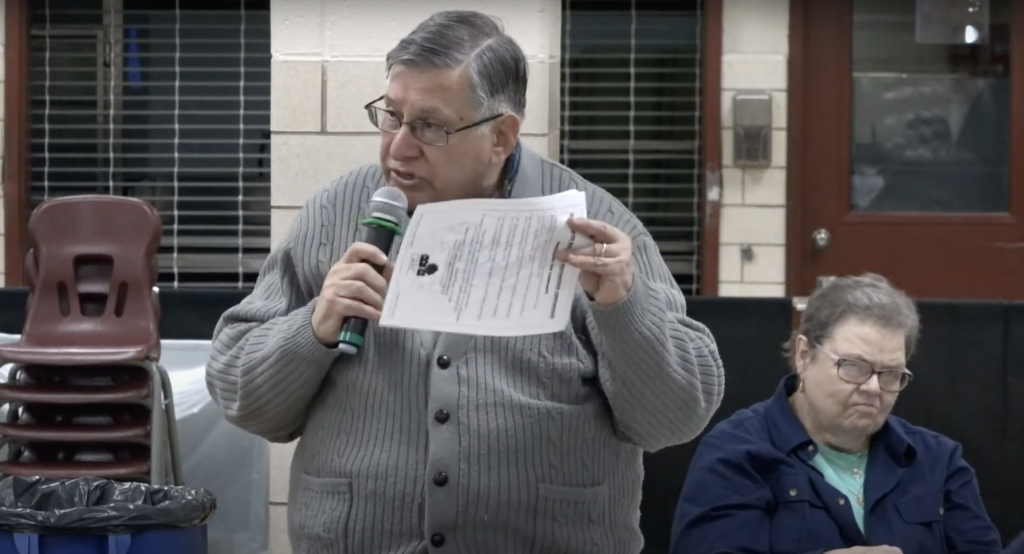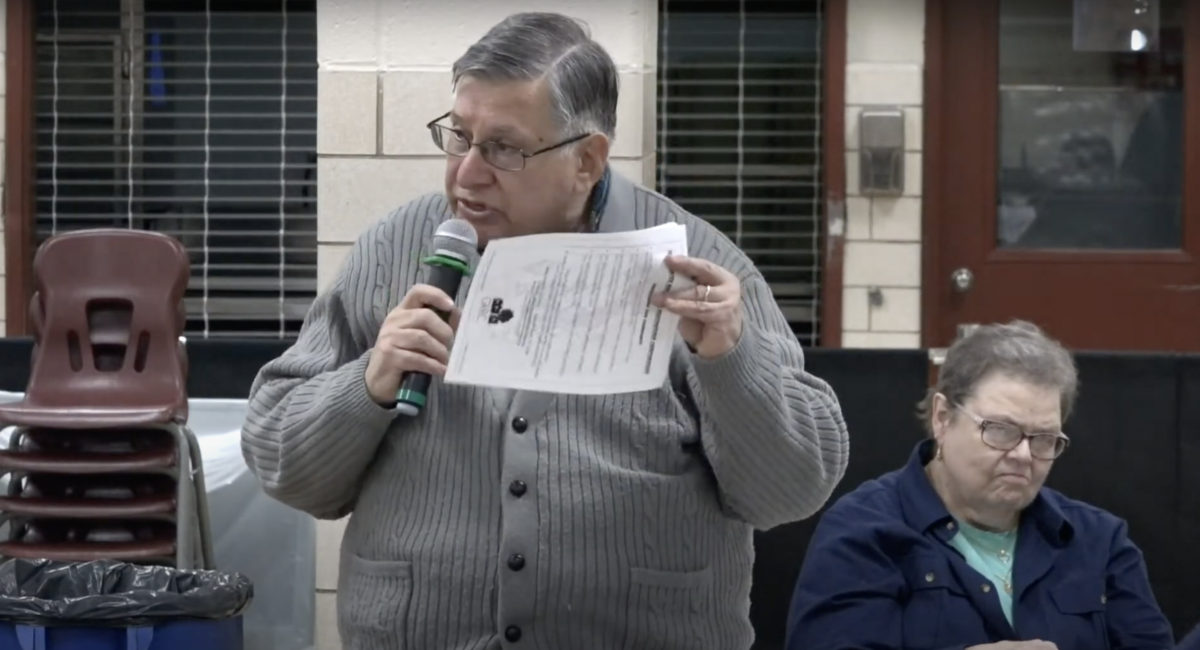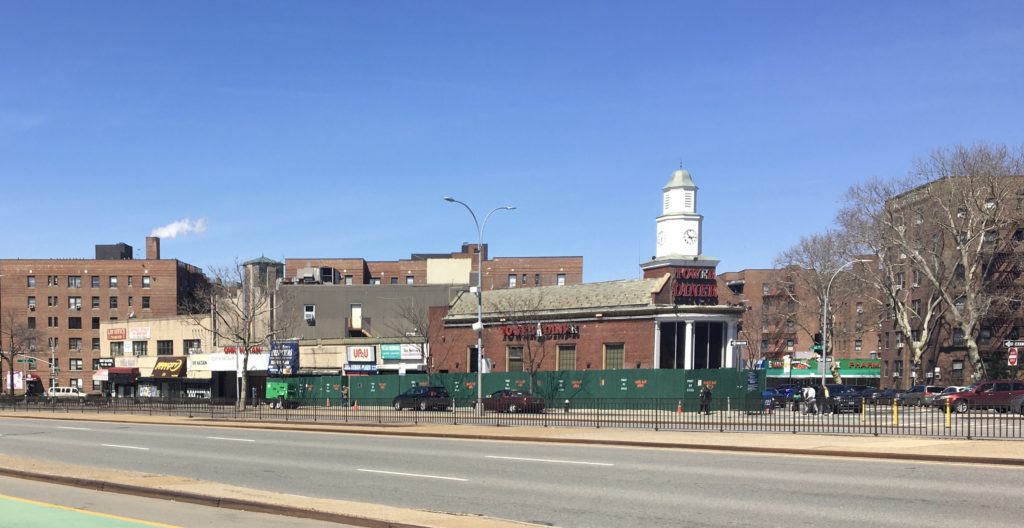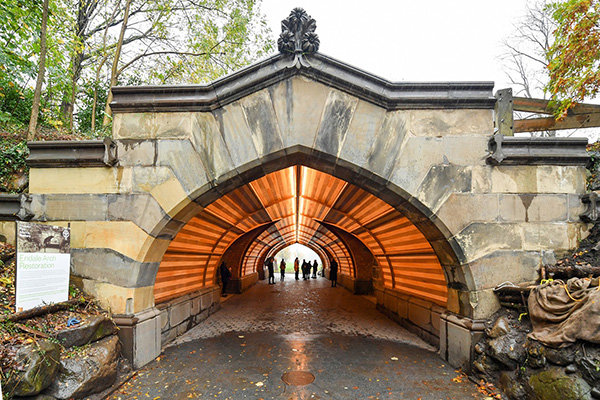Recognizing 50 Years on Community Board 5

Paul Kerzner discussing landmark designation at the most recent CB5 meeting on March 8.
By Iryna Shkurhan | ishkurhan@queensledger.com
For over 50 years, Paul Kerzner has devoted his life to taking care of Ridgewood and surrounding neighborhoods.
In the community, he’s known for being the force behind the planting of close to 30,000 trees on blocks since 1983. He is also substantially responsible for District 5 being one of the tenth largest historic districts in the country, following an eight year effort to secure federal, state and city landmark designation status for 2,982 buildings.
This month marks his 50 year anniversary on Queens Community Board 5, which oversees Ridgewood, Glendale, Middle Village, Maspeth, Fresh Pond, and Liberty Park. Kerzner first got involved in community advocacy as a volunteer for the Office of Neighborhood Services. Before the Community Board existed, it was called a Community Planning Council with half the members it has today and only one committee — land use.
“We began this work in 1983 when I was 23 and now I’m 72, and we’re not finished yet,” said Kerzner at the most recent CB5 meeting on March 8.
The meeting is held at Christ The King High School in Middle Village, the same building where Kerzner says his love of housing was born. A visit from Rosemary R. Gunning, one of the first female Assembly members, to the political science club Kerzner was a member of in high school, sparked his lifelong passion for housing and tenant protection.
Decades later, Kerzner encouraged attendees to write to their representatives to help secure landmark status in Districts 2 and 11, which do not yet have city designation. The protection of a landmark designation guarantees that the architecture integrity and uniformity of buildings will not disappear in the hands of new land developers.
“My whole life has been revolving around protecting neighborhoods, improving neighborhoods, turning neighborhoods around,” said Kerzner in a phone interview. At 72- years-old he still lives on the same block in Ridgewood that he grew up on.
What is now being called one of the “coolest neighborhoods in the world” by Time Out magazine was once a place where residents fled in droves to the suburbs, according to Kerzner.
“At that time, the deterioration of Bushwick was staring us in the face,” said Kerzner.
In 1968, he got involved with the Ridgewood Property Owners and Civic Association and later went on to form the Ridgewood Local Development Corporation with Theodore Renz, who is the third most long standing member of the board at 47 years. Today, their landmarking work continues to secure landmark status for commercial districts on Myrtle Ave and Fresh Pond Rd.
“I knew right from the get go, that he was very dedicated to the community and wanted to do whatever we could do to improve the community,” said Renz, who has worked closely with Kerzner since they met at a civic association meeting close to five decades ago.
Ridgewood has always been a multiethnic home for immigrants. During Kerzner’s youth, the neighborhood was strongly German, a bit Italian and Irish, and now home to many Polish and Latinx immigrants.
“Now the hipsters are moving in,” said Kerzner, who is concerned about gentrification pricing out long-time residents. While he encourages tenants to buy instead of rent, the rising cost of home ownership is inaccessible for many. In February 2023, the median price for a home in Ridgewood was $925K, up 45.1% compared to last year.
The Greater Ridgewood Restoration Corporation is planning to unveil an initiative later this year that will co-op hundreds of six family homes in the neighborhood to make them more affordable for current residents. If they are located in the historic district like planned, the facade will have to be well maintained to meet the landmark guidelines.
“I want to make sure that we can protect our tenants now,” said Kerzner who says the committee will work with the National Cooperative Bank to pay owners of the properties full market value while giving residents an affordable housing option. “We want to give the tenants an opportunity to own where they live so that nobody can throw them around anymore.”
“He cares about his community, and he is willing to do something about it, not just, you know, say that he cares about the community, he’s willing to put the effort forward to do something to make his community better,” Angela Miralbe, Executive Director at Greater Ridgewood Restoration Corporation.
Like Kerzner, two businesses in Ridgewood remain anchored in place. Rudy’s Pastry Shop on Seneca Ave, opened in 1934 and Morscher’s Pork Store, open since 1959 and still regularly visited by CB5 members today.
“If you walk up and down the streets and Ridgewood, you could see the fruits of his efforts,” said Mirabile, who has worked with Kerzner for 41 years.







